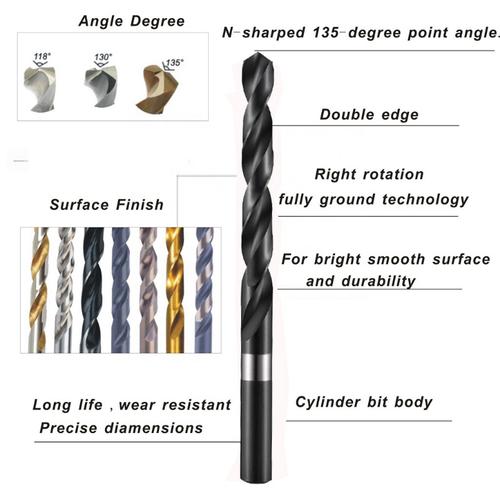
Drill Bits for Hardened Steel: A Comprehensive Guide
When it comes to drilling into hardened steel, the choice of drill bits is crucial. Hardened steel is a challenging material to work with due to its high hardness and resistance to wear. In this article, we will delve into the various types of drill bits available for drilling into hardened steel, their features, and how to choose the right one for your specific needs.
Types of Drill Bits for Hardened Steel
There are several types of drill bits designed specifically for drilling into hardened steel. Each type has its own unique features and advantages. Let’s take a closer look at some of the most popular ones:

| Drill Bit Type | Description | Advantages |
|---|---|---|
| High-Speed Steel (HSS) Drill Bits | These bits are made of high-speed steel, which is a type of tool steel that can withstand high temperatures and maintain sharpness for longer periods. | Excellent for general-purpose drilling, good heat resistance, and relatively low cost. |
| Carbide-Tipped Drill Bits | Carbide-tipped drill bits have a cutting edge made of tungsten carbide, which is much harder than high-speed steel. | Extremely durable, long-lasting, and capable of drilling through extremely hard materials. |
| Black Oxide Drill Bits | Black oxide-coated drill bits provide increased durability and resistance to wear, making them ideal for drilling into hardened steel. | Excellent wear resistance, longer tool life, and reduced friction during drilling. |
| Coated Drill Bits | Coated drill bits have a layer of coating applied to the cutting edges, which can be made of materials like titanium nitride or diamond-like carbon. | Enhanced durability, reduced friction, and improved cutting performance. |
Choosing the Right Drill Bit for Hardened Steel
Selecting the appropriate drill bit for drilling into hardened steel is essential to ensure successful and efficient drilling. Here are some factors to consider when choosing a drill bit:
- Material Hardness: Determine the hardness of the steel you are drilling into. This will help you select the appropriate bit type, such as carbide-tipped or coated drill bits for extremely hard materials.
- Drill Bit Size: Choose a drill bit size that matches the diameter of the hole you need to create. A bit that is too small or too large can lead to poor performance or damage to the material.
- Drill Bit Type: Consider the type of drill bit that best suits your needs, such as high-speed steel, carbide-tipped, black oxide, or coated drill bits.
- Drill Bit Length: Ensure that the drill bit is long enough to reach the desired depth without bending or breaking.
- Drill Bit Material: Choose a drill bit material that is suitable for the hardness of the steel and the drilling conditions.
Drilling Techniques for Hardened Steel
Drilling into hardened steel requires careful planning and execution to achieve the desired results. Here are some tips for successful drilling:
- Use the Right Speed: Adjust the drill speed to match the hardness of the steel. Generally, slower speeds are recommended for harder materials.
- Apply Light Pressure: Excessive pressure can lead to drill bit breakage or poor hole quality. Apply light pressure and let the bit do the work.
- Use Cutting Fluid: Cutting fluid can help reduce friction, lower temperatures, and extend the life of the drill bit. Choose a cutting fluid that is suitable for the material and drilling conditions.
- Preheat the Material: Preheating the steel can make it more malleable and easier to drill. Use a heat gun or other heating device to preheat the material before drilling.
- Use a Pilot Hole: Drilling a pilot hole can help guide the drill bit and reduce the




